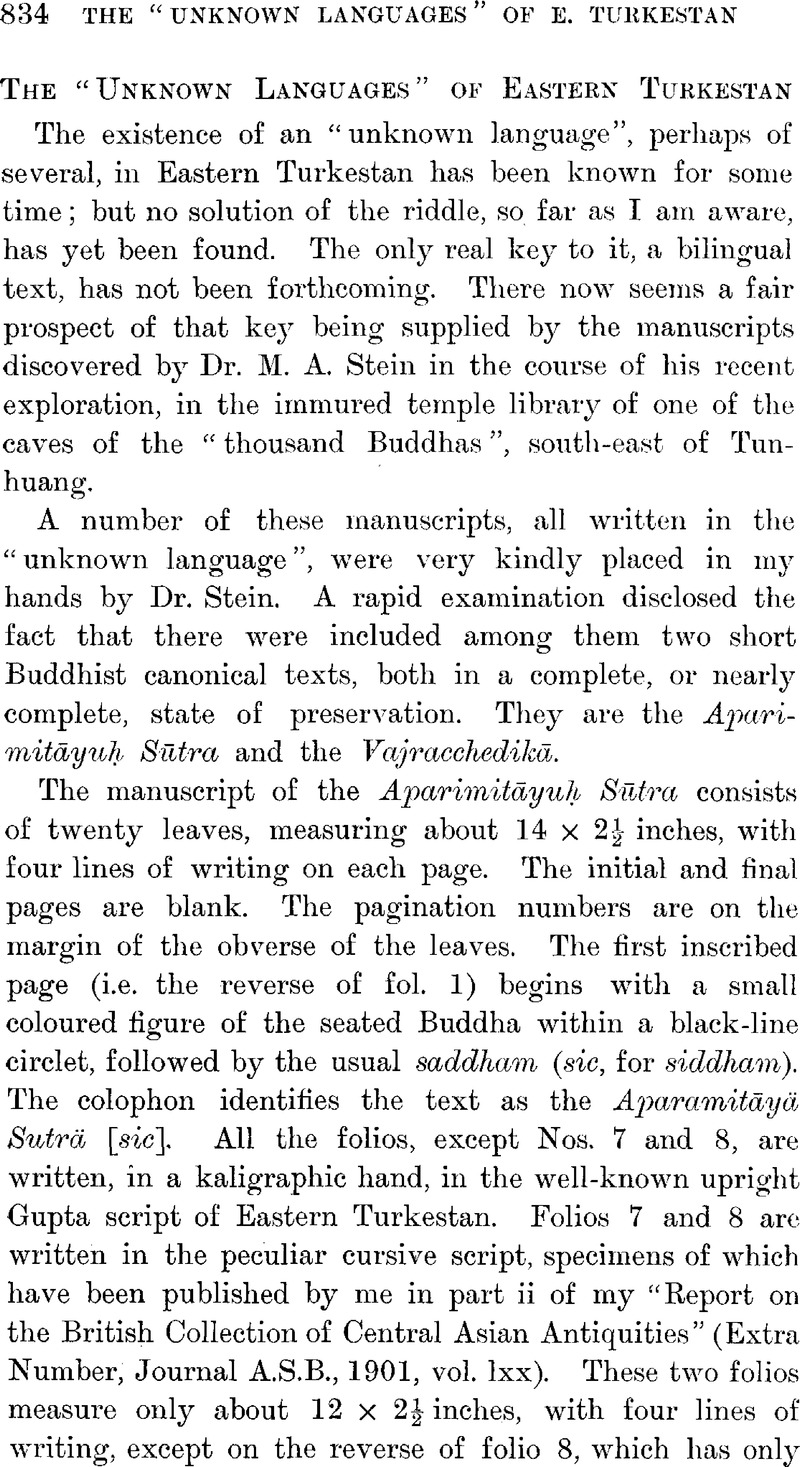No CrossRef data available.
Published online by Cambridge University Press: 15 March 2011

page 837 note 1 This is not exactly a translation of bhagavān. The element bṛa-ysä occurs again below in mi-styau bṛa-ysa = mahāsattva, and means a “being”, sattva. The element gya-stä occurs regularly in the closing phrase of Buddhist canonical works, deva-asura-gandharva, etc., in which it corresponds to deva. The whole word gya-stä-bṛa-ysä, accordingly, appears to mean a “divine being”, or perhaps a “perfect being”. And the phrase gya-stā-nä gya-sta in the Vajracchedikā would seem to represent Sanskrit devānāṁ deva, “most divine,” or “most perfect”.
page 837 note 2 The word sārdham, = ha-nsa, is transferred to the end of the sentence in the Eastern Turkestani text.
page 837 note 3 Here and elsewhere the Eastern Turkestani text is shorter; the reductions are indicated by dots.
page 837 note 4 The Eastern Turkestani version here seems to follow a different Sanskrit text; apparently it means “twice five hundred”.
page 837 note 5 Mi-sta corresponds to Sanskrit mahā. Compare mahatā, mahāsattva, mahānagarīṁ in the two texts.
page 838 note 1 The consonant of this syllable is broken away.
page 838 note 2 The Eastern Turkestani version here seems to follow a different Sanskrit text; for sa-rbaṁ seems to point to Sanskrit sarva.
page 838 note 3 Kṣī-rä would seem to represent Sanskrit pura or nagara, “town.”
page 838 note 4 Saṁ-khye-rma I take to represent saṁghārāma, though the usual Sanskrit text has only ārāma.
page 838 note 5 See n. 4, p. 837.